Best of 2023 Books: My Choice
Pratap Bhanu Mehta | William Dalrymple | David Davidar | Aatish Taseer | KR Meera | Manu S Pillai | Janice Pariat | Amit Chaudhuri | Jerrry Pinto | Namita Gokhale | Tishani Doshi
/wp-content/uploads/2023/12/Mychoice1.jpg)
PRATAP BHANU MEHTA, Political scientist and columnist
THE YEAR’S HIGH points were three books by scholars’ scholars. Raza Foundation and Setu Prakashan have published the incomparable philosopher, musicologist and intellectual historian, the late Mukund Lath’s Pratyanngmukh. It is a riveting philosophical essay on knowledge, truth, consciousness and substance. It is a rare reminder of a generation of brilliant scholars who chose to write in Hindi.
Peter Brown, biographer of Augustine and one of the greatest historians of late antiquity is one of those historians you can read for the sheer precision and pleasure of the prose
The translation of the great Wang Hui’s magnum opus The Rise of Modern Chinese Thought has finally been published by Harvard University Press, and it is worth the effort. Peter Brown, biographer of Augustine and one of the greatest historians of Late Antiquity is one of those historians who you can read for the sheer precision and pleasure of the prose. His intellectual autobiography, Journeys of the Mind, published by Princeton University Press may seem esoteric. But at a time when universities are committing hara-kiri it was a reminder of what the scholarly vocation can be, at its brilliant, most curious and generous best. One unexpected delight was Abir Bazaz’s book on the Kashmiri saint Nund Rishi. Nund Rishi: Poetry and Politics in Medieval Kashmir (Cambridge University Press) is a riveting meditation on the themes that occupied this larger-than-life figure in Kashmiri culture: Death, Apocalypse, Liberation. The fiction highlight of the year was Benjamin Labatut’s The Maniac (Penguin), based on the life of John von Neumann a vertigo inducing exploration of the boundaries of rationality, egomania, and madness.
WILLIAM DALRYMPLE, Author
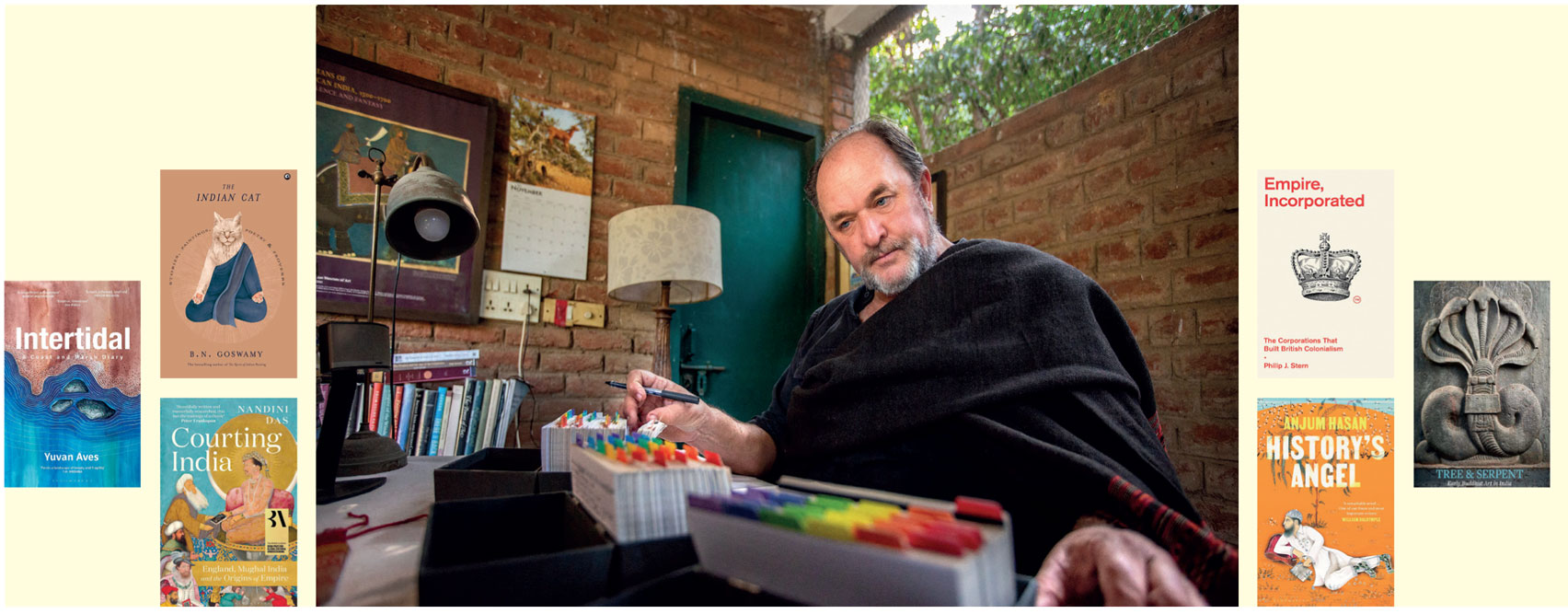
THE TREE AND SERPENT exhibition at the Metropolitan Museum in New York, and its gorgeous accompanying catalogue by John Guy (Mapin), was the year’s cultural highlight for me. The early Buddhist art of Southern India that it showcased opened a window on a sophisticated courtly and monastic world previously known only to a handful of art historians.
It is a world where bare-chested Indian rajas in elaborate princely turbans and cockades set off on elephant-back pilgrimages as casually as we might jump in a taxi; and a world of ecstatic devotion, where a glimpse of the Buddha’s relics could drive a palace full of dignified courtiers into the ancient Indian equivalent of weeping Beatlemania. All this was set in a sacred landscape where the jungles were alive with wonders: lotus buds that spilled priceless gems and jewels with the abundance of magical cornucopias; and where eagle-beaked gryphons and many-headed cobras competed to protect the turban of the Buddha or the dust of his disciples.
Empire building is usually envisaged as the concern of nation states, but as Philip J Stern convincingly shows in Empire, Incorporated (Belknap Press) his brilliant, ambitious and often surprising new study, it was initially more often the entirely privatised business of Tudor and Elizabethan commercial corporations. With great clarity and remarkable archival reach, Stern convincingly argues that it was joint stock “venture colonialism” that financed and drove the earliest attempts at establishing colonies from Ulster to Spitsbergen, Virginia to “Cathay”, and even a Puritan Republic of the Bahamas, as ruthless and often violent slavers, “privateers” and merchant adventures sailed off to establish outposts that blurred the line between commerce and colonialism. It was these trading posts, Stern argues, that eventually grew to be the “cornerstone of a British Empire” made up of “charters, concessions and contracts” that “was never fully owned or operated by Britain itself.” Empire, Incorporated is a remarkable contribution to the current global debate about Empire and a small masterpiece of research.
Born in Bengal, Nandini Das is now a professor of Early Modern English Literature at Oxford and is as sure-footed and knowledgeable about the politics and arts of Jacobean London as she is about those of the Mughal court. As she puts it in her remarkable new book about Sir Thomas Roe’s 1616 embassy to Jahangir, Courting India: England, Mughal India and the Origins of Empire (Bloomsbury), “in practical terms, [Roe’s] Embassy achieved very little… To the Mughals [the English] were hardly worth a mention.” The embassy may have been a failure, but Das’ superb book about it is a triumph, of both writing and scholarship.
Anjum Hasan’s History’s Angel (Bloomsbury) is a wonderful Delhi novel for our times, a Shahr-e-Ashob of the new India, eloquent, brave, elegiac and ultimately, heart breaking. This remarkable novel reminded me both of Ahmed Ali’s Twilight in Delhi and Anita Desai’s In Custody and confirms Hasan as one of our finest and most important writers.
A wonderful and wonderfully talented new voice finds its vocation in Yuvan Aves’ Intertidal (Bloomsbury). It is gentle and poetic, subtle, watchful and observant, written very much in the tradition of Robert Macfarlane and haunted by the ghosts of Barry Lopez and JA Baker. This is a startlingly brilliant and moving debut, written in pellucid prose as clear and inviting as a rock pool, as calming as the lapping of the sea on the shore, and as hopeful as a new dawn on the Coromandel coast.
Finally, the great BN Goswamy has left us one final coda to add to his stack of masterful writings. The Indian Cat (Aleph) is a suitably feline farewell from our greatest art historian, who will be hugely missed by all Indian readers. Om shanti!
DAVID DAVIDAR, Publisher, novelist, and anthologist
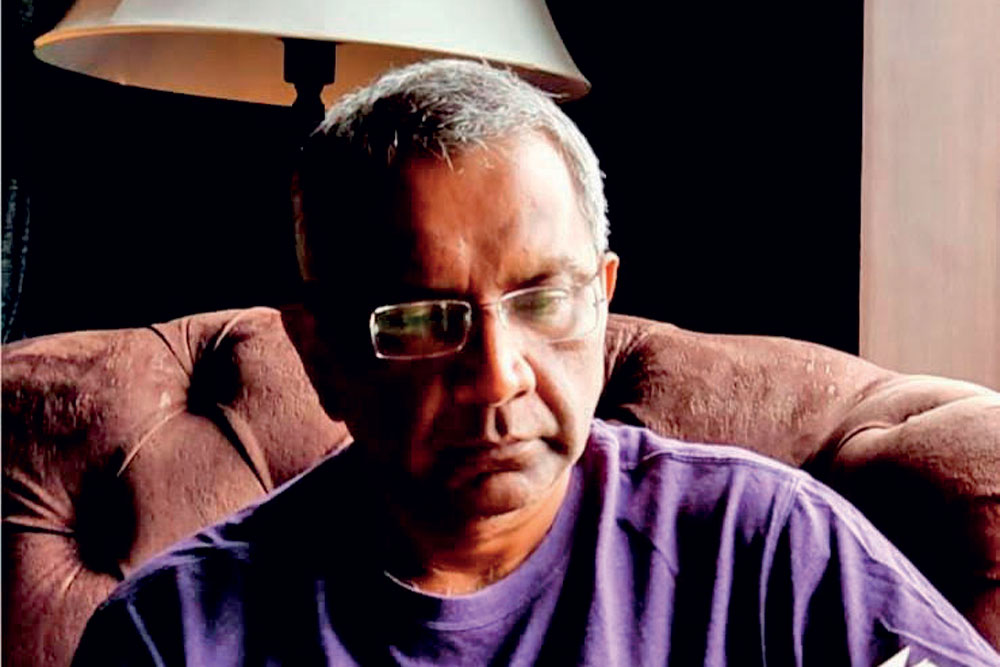
FOR THE PAST decade or so, I haven’t been much impressed by the fiction I have read, either from here or elsewhere. Flat, superficial or banal, many of the vaunted novels I have sampled could just as well have been written by an unthinking AI programme. This is why when I finally read a novel that fully engaged me, I was greatly excited. I had read Pedro Paramo, the surreal masterpiece by the Mexican genius, Juan Rulfo, first published in 1955 in Spanish, once before, in a translation by Margaret Sayers Peden. That reading left me a little mystified, which was unsurprising because it is said that you have to read Rulfo’s slim book at least three times to fully understand it. The second time I read it, a month ago, it was in a new translation by Douglas J Weatherford (Profile Books). The translator has been justly hailed as the best translator yet of the novel, restoring its original, rather idiosyncratic, punctuation, and sticking close to the original without sacrificing style or lucidity, and ensuring the book works in English. Having read Weatherford’s translation, I can say I understand the book better.
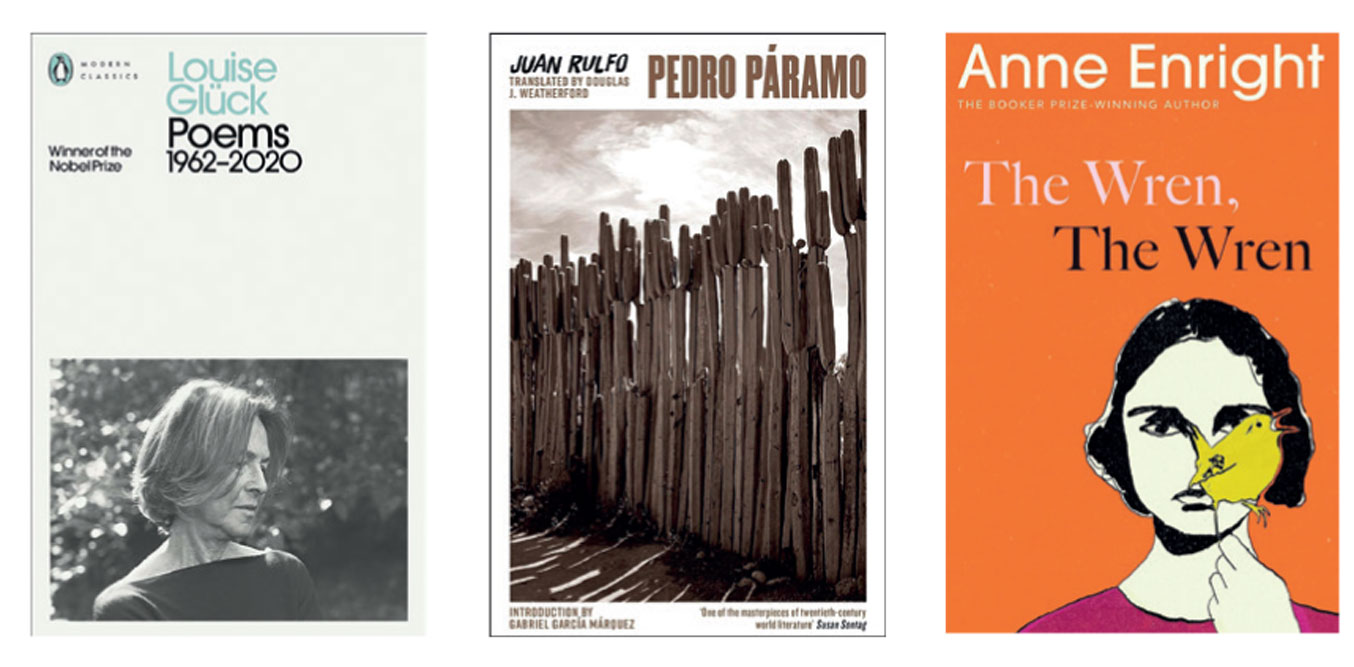
Essentially, the plot of the book, such as it is, revolves around the search by the central character and narrator, Juan Preciado, for his father, Pedro Paramo. At his mother’s deathbed, the narrator agrees to search for his father, whom they left years ago; accordingly, he journeys to the town of Comala, a stronghold of the Paramo family—a desolate place filled with forlorn whispers, ghosts, and gruesome memories of the tyrants and reprobates that once ruled it. As he wanders around town, and its memories and atmosphere seep into him, the novel grows increasingly inventive and fantastical, little wonder then that it has been hailed as one of the foundational books of modern Latin American fiction—a work that has enthralled millions of readers and captured the imagination of dozens of writers.
This is the book that inspired two of the greatest exemplars of magical realism—Gabriel Garcia Marquez (who has contributed a foreword), and Mario Vargas Llosa not to mention other Latin American greats like Carlos Fuentes and Jorge Luis Borges. It was, without question, the best novel I have read this year. I will read it again after a few months. Perhaps, then I will understand it fully. Dios mediante.
I have always loved the poetry of Louise Gluck, who died a few months ago. Stripped to the bone, yet striking, her lines have an ‘austere beauty’— as described by the Nobel Prize Committee. This year, I added to my library one of the most comprehensive collections of her work, Louise Gluck, Poems 1962- 2020 (Penguin). It collects 12 collections of her poetry including my favourites, The House on Marshland (1975), The Triumph of Achilles (1985), The Wild Iris (1992), and A Village Life (2009).
Pedro Paramo by Juan Rulfo was, without question, the best novel I have read this year. I will read it again after a few months. Perhaps, then I will understand it fully
There are numerous delights to be found scattered everywhere in the book, beginning with the author bio. At a time when the bloviated pronouncements of publishers and writers trumpet the mostly non-existent virtues of small talents, I loved its deadpan description of Gluck’s achievements: “Her many awards include the Nobel Prize for Literature, the National Humanities Medal, the Pulitzer Prize, the National Book Award, the National Book Critics Circle Award, the Bollingen Prize, and the Wallace Stevens Award from the Academy of American Poets.” The entire bio, which I am sure she okayed, is exactly three sentences long. A perfect intro to the work of a giant of the world of literature who preferred to let her work speak for itself. Let me leave you with a few lines from her great poem ‘Lamium’:
“Living things don’t all require/
light in the same degree. Some of us/
make our own light: a silver leaf/
like a path no one can use, a shallow/
lake of silver in the darkness under the great maples.”
A final parting thought for 2023. For those interested in such trivia, the most praised work in the Western world was not a book by Nobel Prize-winner Jon Fosse, Booker Prize-winner Paul Lynch, or the winners of the Pulitzer Prize, Barbara Kingsolver and Hernan Diaz. Rather, it was the latest novel by the Irish writer Anne Enright, The Wren, the Wren (Jonathan Cape). It was, apparently, universally acclaimed by most of the Western world’s best-known literary critics. I haven’t read it, but perhaps you might wish to.
AATISH TASEER, Author
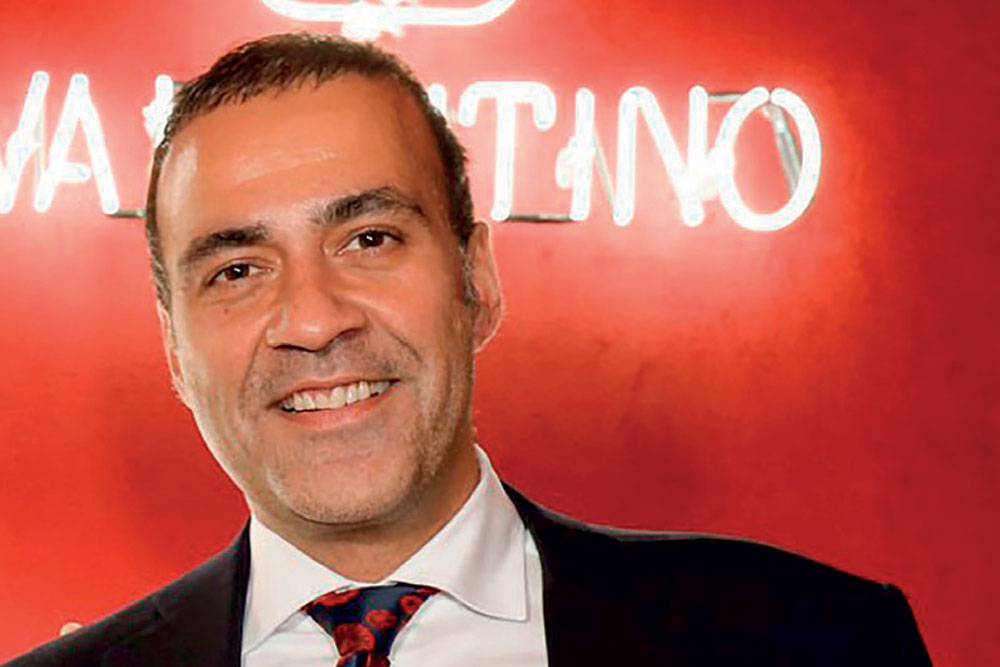
TREMOR BY TEJU Cole (Penguin Random House)
This year’s been a haze. I feel I’ve never read more, but I can’t remember the last time I read anything that didn’t have to do with this year-long pilgrimage I’ve been on. Cole’s new novel, which I found grave and elliptical, was an exception. There were times when I doubted its concerns, almost as if the freshness and easy cosmopolitanism of the writer behind Open City had given way to the provinciality of Brooklyn and the American campus. Still what I admired was the deep erudition and the structure which seemed truly to achieve the chiastic echoes of epic narrative, both in Greece and in India. The closer the novel got to the placelessness of certain Giorgio de Chirico paintings, the more it detailed a landscape as bleak as that of ‘The Wasteland’, the more I found myself missing humour. The laughter of the universe is bigger than historical injustice. It deserves a place in any serious reckoning. Its absence made me feel the joylessness of Tremor was less heartfelt and more the result of borrowed politics.
Victory City by Salman Rushdie (Hamish Hamilton)
I read Rushdie’s new novel in Bolivia and was immediately transported to that landscape of shattered boulders and meandering rivers that is Kishkindha. It was intellectually thrilling to me to read so direct an intellectual engagement with the opening section of VS Naipaul’s India: A Wounded Civilization. The two writers take away completely different lessons from the destruction of Vijayanagar by a confederacy of Muslim princes in the 16th century. As Indians—I myself am guilty of this—we tend to dig in on either side of the argument. Perhaps it’s time, especially as we witness the ravages of the Hindu Right, to consider being less beholden to history—to use Rushdie’s famous phrase, less “handcuffed” to it. Victory City is a triumph of art and the imagination over the demands of the past. Naipaul himself only reckoned with history as seriously as he did to be done with it: “The past has to be seen to be dead; or the past will kill.” In Victory City, Rushdie has given us the bookend to our historical and cultural hand wringing. How we ended up here—a nation of billion plus Hindus with two hundred million Muslims threaded through every state of the country—he seems to tell us is less important than the question of: what next? It’s as if Rushdie reframes the cold historical judgement of Naipaul, giving it the warmth and humanism that is so integral to his nature. “The question of origins,” Hukka said gravely, “we must leave to the gods. The question we must answer is this one: now that we find ourselves here—and they, our seed people, are down there—how shall we live?”
The Anomaly by Hervé Le Tellier (Other Press)
I got to this Goncourt-winning novel only this year, but found it wonderfully entertaining—a kind of philosophical thriller that dramatises our collective obsession with the idea of “the double”. When AF 006 makes to land in JFK on a June day, after a nasty patch of turbulence, its appearance produces hysteria on the ground. The reason is that an identical plane, carrying identical passengers, had already landed 106 days before. Suddenly the 243 passengers of Flight 006 have to confront their doubles, who have been leading parallel lives for the past three months. Le Tellier is able to use a device that could easily have felt like a silly gimmick to deliver a novel of ideas. Our ancient preoccupation with doppelgangers, which allowed Dostoevsky to pry apart man and consciousness in The Double, is given fresh relevance in an age of artificial intelligence and bio-printing. “Am I the original or the copy?” an architect asks, giving voice to the feeling that in a world of so many copies there can be no stable sense of self.
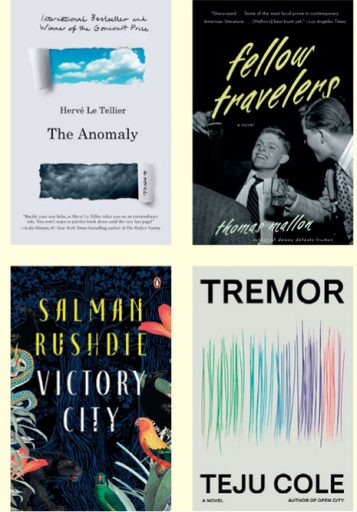
Fellow Travelers by Thomas Mallon (Vintage)
I am embarrassed to admit that I have come to this wonderful novel of gay DC in the age of McCarthy only via the television show of that name, which features some of the volcanic sex scenes I have ever seen (between Matt Bomer and Jonathan Bailey) on any screen, big or small. The novel is just as naughty, but also more serious. It presents us with choices, related to the price of a life of secrecy, that (I feel) have much more relevance in India, circa 2023, than in the US. For me, living in a relatively free society as far as gay marriage and acceptance are concerned, but carrying in my mind the experience of having grown up in India, Mallon’s novel touched me deeply. I was so preoccupied with India’s historical convulsions that I neglected sexuality almost completely. I’m writing about it for the first time and it’s interesting to find, such as with Andrew Holleran’s Dancer from the Dance (1978), that older books in this canon have so much more meaning for me.
KR MEERA, Author
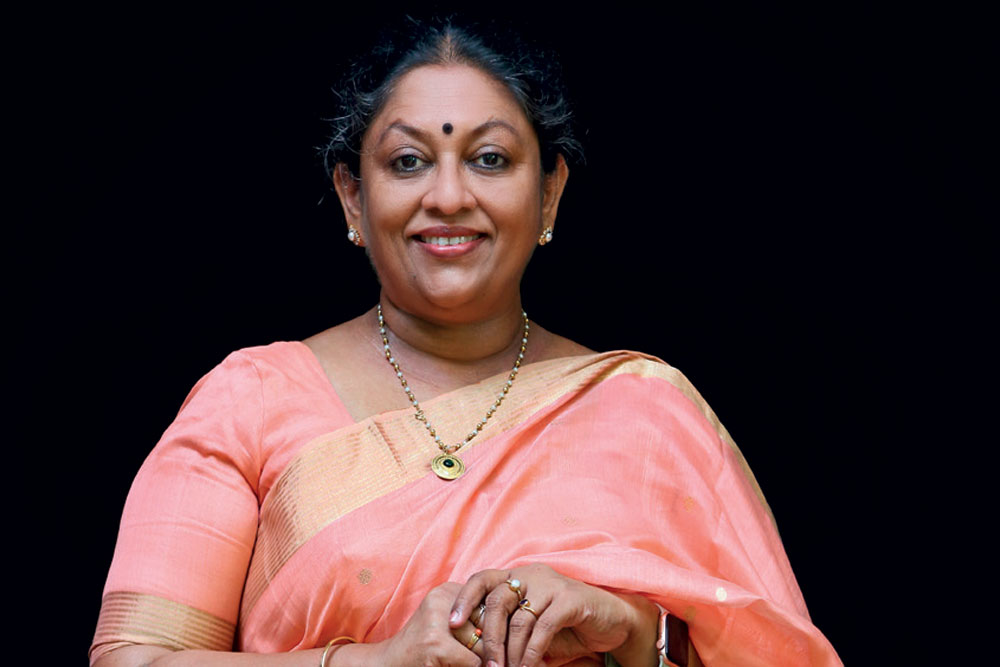

HISTORY’S ANGEL by Anjum Hasan (Bloomsbury) What does it mean to be a Muslim in contemporary India? This book is an exposition of that answer, which is heartbreaking and thought provoking. My takeaway from the book are the quotes; “The history student’s primary lesson is to quell all nostalgia,” and, “You try separating Hindus and Muslims this way you go into the past of this country, and all you find are entanglements.”
The Patient in Bed Number 12 by Raj Kamal Jha (Hamish Hamilton) I call this novel ‘prosetry’ because of its amazing rhythmic prose, which merges brainstorming politics with heart-wrenching fiction. I haven’t read another book that so cleverly uses the pandemic as a metaphor to narrate the state of our country.
MANU S PILLAI, Author
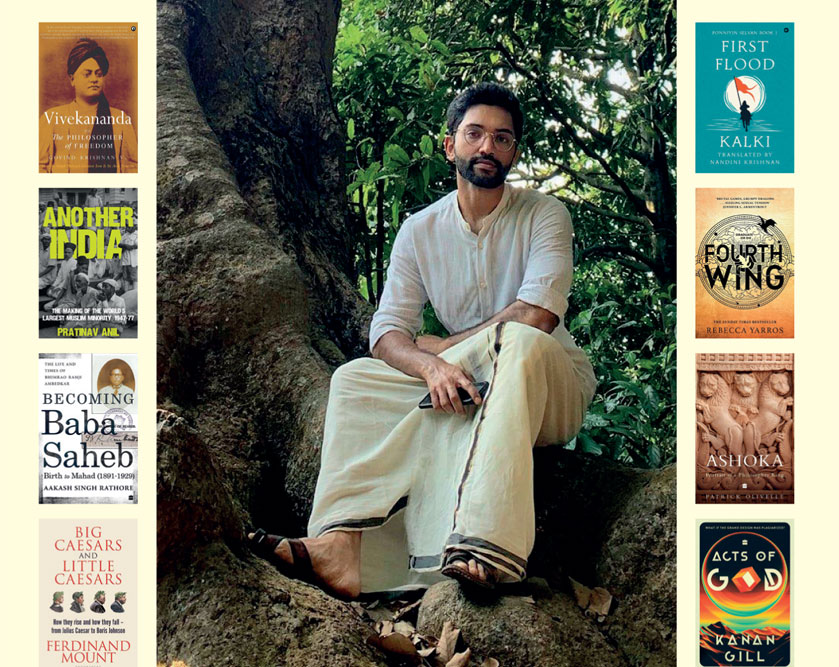
ONE OF THE MOST charming books I have read this year is Ashoka: Portrait of a Philosopher King by Patrick Olivelle (HarperCollins). There is a very gentle quality to the writing, even as it tackles big historical questions about the enigmatic Mauryan emperor, reorienting him as a king who was Buddhist as opposed to a Buddhist king—a subtle but significant distinction. Another favourite was Aakash Singh Rathore’s Becoming Babasaheb (HarperCollins), the first of two volumes on the life of BR Ambedkar. While one, understandably, reads a good deal about Ambedkar as a man of ideas and the intellect, Rathore’s close attention to his personality is refreshing. The book is also packed with very many details that have evaded other biographers, and corrects a number of general misconceptions. Govind Krishnan V’s Vivekananda: The Philosopher of Freedom (Aleph) is a striking debut, demonstrating the author’s meticulous study of the 19th-century monk’s writings, and identifying in it very modern impulses. I look forward to more of Krishnan’s writing. Pratinav Anil’s Another India (Hurst) has been another very impressive study this year, which I have been recommending across the board—it will not comfort those who romanticise the heyday of Nehruvian secularism in India, and instead holds up a mirror. Some might find the book provocative even, but it states hard truths, backed by solid evidence, upsetting many ideas we take for granted in 20th-century Indian history.
One witty read—which I picked up at a highly inflated price in Europe—was Ferdinand Mount’s Big Caesars and Little Caesars (Bloomsbury), on the rise and fall—and general shared characteristics—of strongmen in our times as well as in the past. It is an entertaining volume, much of the fun also stemming from the writer’s trademark flair and style of writing. Among works of fiction, I really enjoyed Rebecca Yarros’ Fourth Wing (Piatkus)—a book of fantasy fiction, featuring dragons, dragon-riders, and magic. I hadn’t known of Yarros’ work and this one has resurrected an old, adolescent interest in the genre. Nandini Krishnan’s translation of Kalki’s Ponniyin Selvan series, the first volume of which was published under the title First Flood (Eka) is another delightful book. I used it as bedtime reading, which was not terribly wise, given the plot twists and drama in the story. I have just picked up the second volume in the series, Troubled Waters. My final read of the year has been an advance copy of Kanan Gill’s forthcoming Acts of God (HarperCollins). It is a book of science fiction, and Gill has clearly geeked out. I must admit I went into it with some trepidation but ended up thoroughly, absolutely enjoying it. Gill has a clever, sardonic style, and a vivid imagination—elements that make for wonderful reading.
JANICE PARIAT, Author
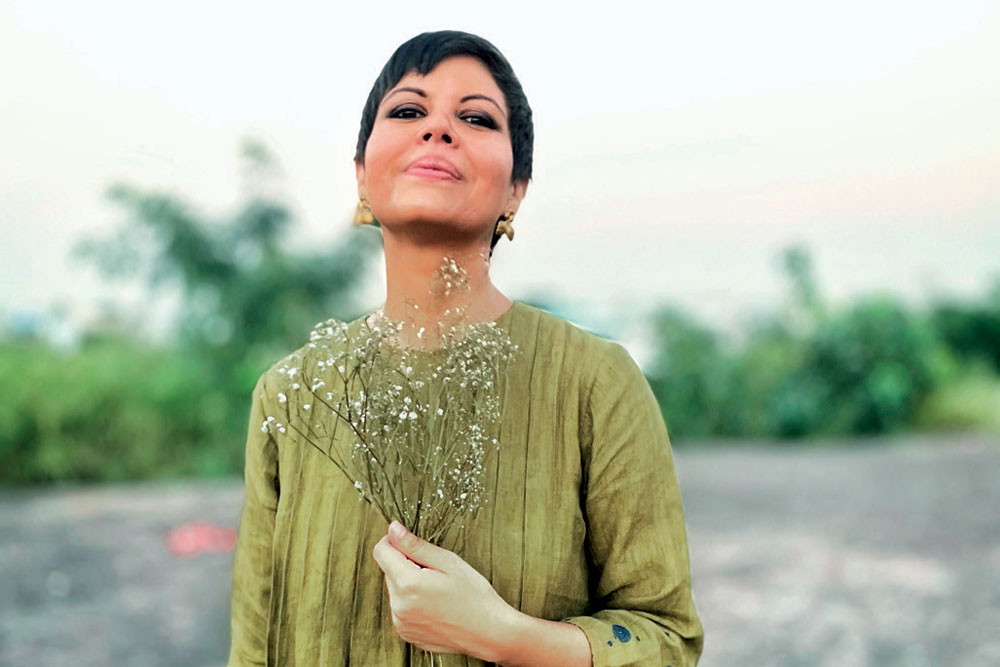
BLACK RIVER by Nilanjana S Roy (Context). Framed as a gritty, fast-paced crime thriller, it becomes so much more than that with its meditations on justice, friendship, family, and the natural world. I particularly loved the chapters set on the banks of Delhi’s forgotten river, the Yamuna, bringing to life the worlds of Rabia, her gentle husband Khalid, and the run-away farmer Chand.
Quarter Life by Devika Rege (Fourth Estate). Scathing, serious, savage in its peeling away of a political moment in India’s history to reveal dark, troubling truths about where we are as a country— polarised, and democratically compromised. Rege does what so few “political” novelists manage to, interweave the story of a changing political landscape with social and philosophical inquiry.
This Is Salvaged by Vauhini Vara (Fourth Estate). Vauhini Vara’s language is sharp, precise, and always surprising, even as her themes are the stuff of life—loss, loneliness, aging, addiction—but of course with her characteristic complicated twists.

The Mill House Murders by Yukito Ayatsuji (Pushkin Press). A group of acquaintances gather as they always do every year at the mysterious Mill House, home to the son of Japan’s most eccentric and famous painter. Twisty, atmospheric, and structurally superb, moving in two separate timelines, alternating between third person and first, until you arrive at the end and understand why.
Stories from the Valley by Karen Lalrindiki Donoghue and Donskobar Junisha Khongwir (self-published). This gorgeously produced book of interwoven text and images tell the stories of the Mizo residents of a small neighbourhood in Shillong, Meghalaya, called “Happy Valley”. What unfurls is a history that’s remained mostly hidden—of migration, loss, and much resilience.
AMIT CHAUDHURI, Author
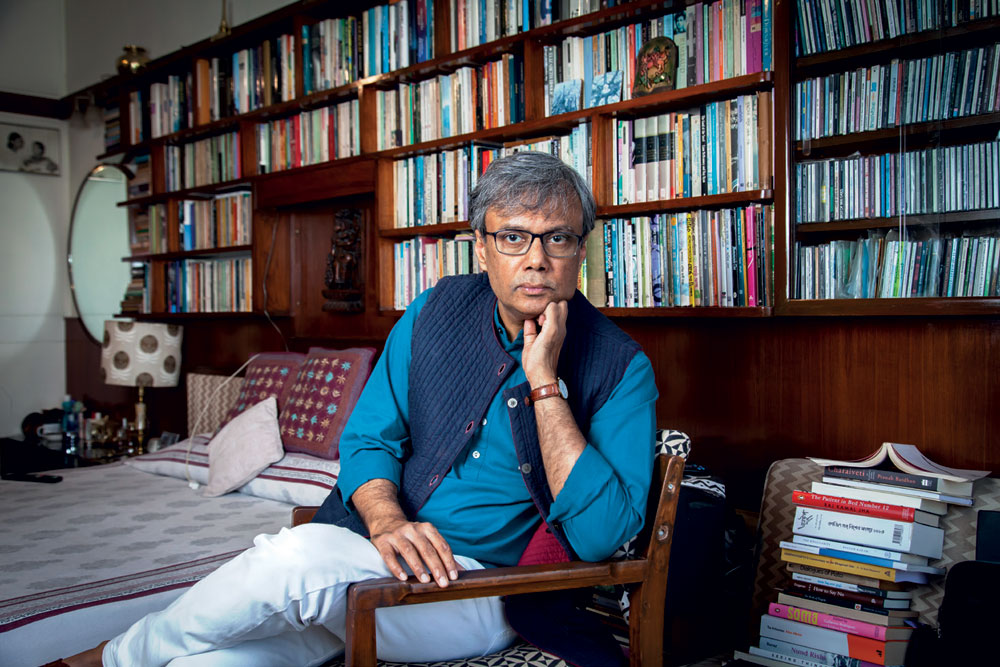
I READ ADIL JUSSAWALLA’S Earth (Paperwall Publishing) this year; it has had an impact on me that’s utterly incommensurable with its size. The subtitle of this eleven-page book is ‘Poems for Veronik’. The jacket says, “Veronik, a French citizen, met Adil in London in 1967. She came to Bombay with her daughter Katia when Adil decided to quit London and stay on in Bombay.” Veronik died in 2020. These poems are (again, from the back cover) “among several written over many years”, and they “deal with the gardens Veronik and I knew and what the earth of those gardens brought us”. And who—in case you don’t know—is Adil? He is one of the four poets—the others being Arun Kolatkar, Gieve Patel, and Arvind Krishna Mehrotra—who created a small publishing house, Clearing House, to publish, in effect, their own poems in the late 1970s. Their output seemed relatively small until recently. Kolatkar wrote a lot of poetry in English and Marathi, but made sure much stayed unpublished. Jussawalla and Mehrotra (83 and 76 years old respectively) have become surprisingly productive in the last decade and a half. They bear out the Japanese belief that the artist receives a fresh lease of life at 60: they are our present-day Hokusai. I will make my statement about Earth bland, generic, and unequivocal: it is one of the best collections of poems I have read in years. In ‘Amaryllis’, Jussawalla compares the flower to ‘red loudspeakers’, thereby returning to the beginnings of Indian poetry in English: Toru Dutt’s 1873 sonnet ‘Baugmaree’, in which she says the shimul flower is ‘red—red, and startling, like a trumpet’s sound’. A new lease of life for the poet, and for the tradition.
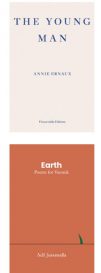
Another striking book from this year, almost as weightless as Earth when you pick it up, is Annie Ernaux’s The Young Man. The publisher Fitzcarraldo says it’s an essay; it could equally be—given the provocative book-length incarnation it takes (like other works by this writer)—a novel or memoir. Its genre remained unresolved for me when I read it one October morning in Edinburgh this year. I had been invited by the university to give some talks, and to sit in on a class on life-writing whose set texts that day were The Young Man and an essay I had written called ‘I am Ramu’. “You don’t have to read it,” the tutor had said. It was difficult not to admire what brevity can make possible: a particular kind of meditation and composition—even (since Ernaux’s themes are often ostensibly emotionally fraught) composure. The book recounts a relationship the narrator has had with the eponymous ‘young man’, who is 30 years younger than her. It is a deeply moving, even affectionate, study of contingency, dwelling on why we spend time with one person rather than another; the agglomeration of traits (each as distinct and fragile as a word or brushstroke), created by class, gender, and history, that constitute that person; the impermanence of things that are overwhelmingly real—love, human beings, and the world in which we encounter each other.
JERRY PINTO, Author
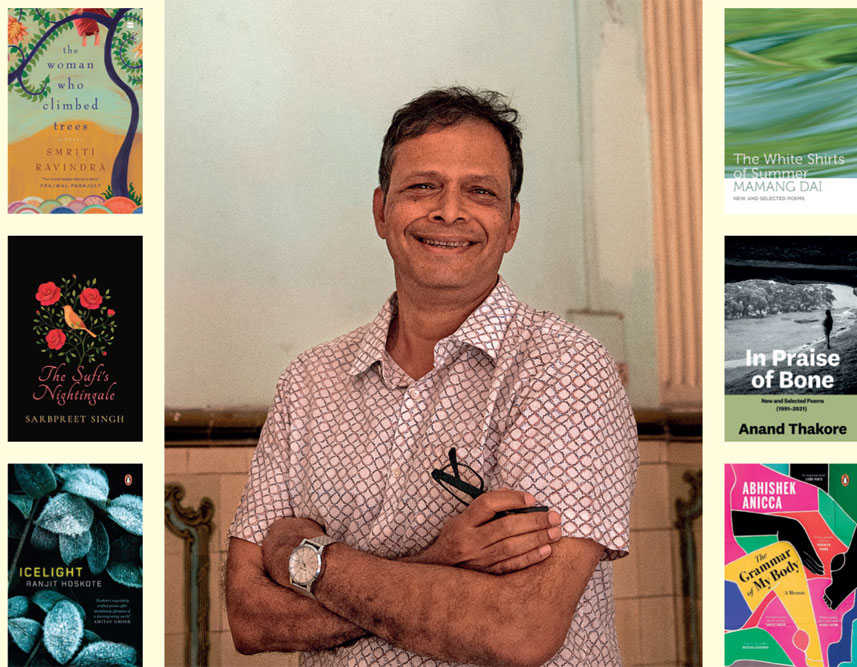
IT HAS BEEN a good reading year but most of my reading has been anachronistic; in other words, I have not been keeping up as I should. But the joys of being a writer and only an occasional reviewer is that I can dawdle and read books from five, fifty or five hundred years ago if I so choose. My TBR spans time zones and many nations and several gender situations, which makes me happy.
But that isn’t to say I didn’t read some exceptional books that were published this year. One of these was The Woman who Climbed Trees by Smriti Ravindra (Harper Collins) which was spell-binding from the time I met it in its manuscript form. This is a novel from Nepal that wears its intercultural identity lightly; it is the characters who people it that will leave their mark on you.
I also enjoyed very much The Sufi’s Nightingale by Sarbpreet Singh (Speaking Tiger), which is a fictional retelling of the love story between the 16th-century mystic and poet, Shah Hussain who was a Malamati and Madho, a young man. The story is told from the point of view of one of the disciples of the saint who suffers agonies as he watches his master debase himself for love.
The Grammar of My Body by Abhishek Anicca (Vintage) was another stand-out book. It is a set of essays in which the writer, someone who has suffered so much from ableism that he identifies himself as queer almost as a refuge, tells you what it is like to live in his body.
I was glad to see The White Shirts of Summer: New and Selected Poems by Mamang Dai (Speaking Tiger) come out. Hers is a quiet voice, meditative and serene but there is underneath somewhere, a larval flow of anguish and rage. Anand Thakore’s In Praise of Bone: New and Selected Poems 1991-2021 (Speaking Tiger) is another welcome addition to my shelves. Thakore has published three excellent collections of poetry, witty, savage and deeply committed to the art and music of poetry. He deserves to be known better. His introduction to his late friend Deepankar Khiwani’s posthumous collection De Kooning’s Smile: Collected Poems shows him to be a fine critic too. Icelight (Hamish Hamilton) by another friend, Ranjit Hoskote also came out and bears all the hallmarks of his distinctive voice. With many of these manuscripts comes an unfamiliar ache. In past books, I would have heard various versions of poems being test-driven at the Poetry Circle, an institution my city and its poets nurtured for more than 20 years. No more. Now I read the poems when they turn up in the world, like everyone else.
It was a good year for Indian poetry in English, it was a bad year for Indian poetry in English with the departures of Anna Sujatha Mathai earlier in the year and then Gieve Patel. We lost Jayanta Mahapatra as well and the people’s poet Gaddar too. But in all their works, there are poems I will visit and revisit.
Death, thou shalt die.
NAMITA GOKHALE, Author
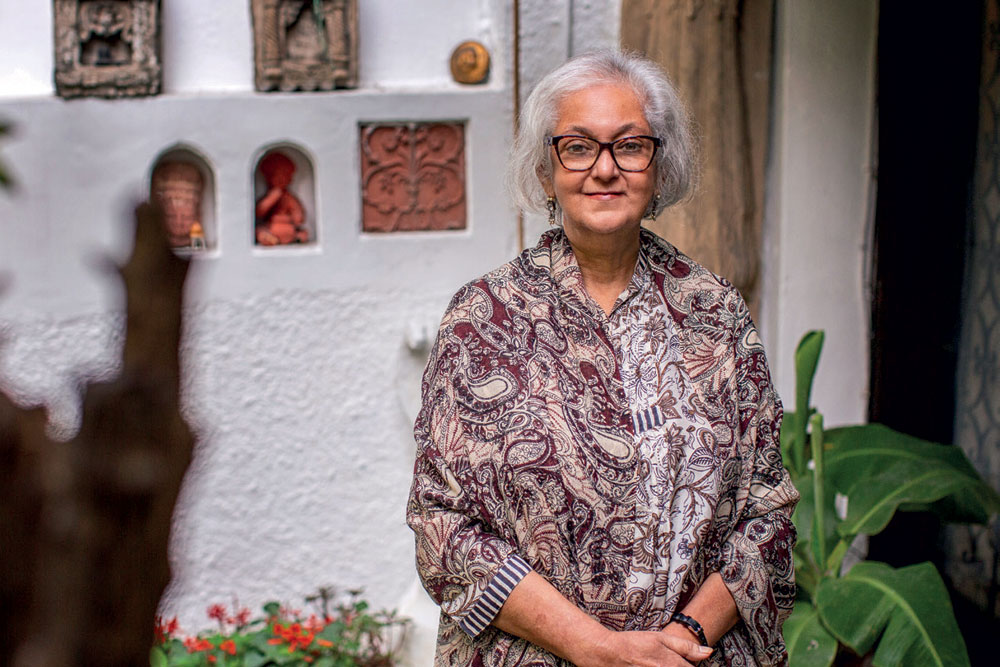
“If you only read the books that everyone else is reading, you can only think what everyone else is thinking” – Haruki Murakami
THE INDIAN CAT by BN Goswamy (Aleph) . The last book by the late BNG is a fitting tribute to his multifaceted genius. It is a journey of wonder through feline portraiture and narrative, transporting the reader across oral and written literature, chronicles and poetry, popular idioms and proverbs, and other catlore. The sketches and colour illustrations will touch the hearts of all cat lovers. Whimsical, learned, and encyclopaedic, it is a volume to love and cherish.
In his Prefatory Note, the author quoted his Swiss friend; “You are an art historian, Brijinder, are you not?” “I am, or so I think” I replied. “Then, you should love cats: all art historians do.” Salaam, Goswamy Saheb.
The Witch in the Peepul Tree by Arefa Tehsin (HarperCollins). This novel took me by surprise. I knew Tehsin as a gifted writer of young-adult fiction. The book was presented in the genre of suspense/crime fiction, and indicated something in the realm of the supernatural. It proved to be much more than that.
It is Makar Sankranti, 1950, when 16-year-old Sanaz’s body is discovered in her father Dada Bhai’s house in Bohrawadi, Udaipur.
The narrative follows the arc of a single day through multiple perspectives and points of view. The labyrinth of memories and revelations encapsulated in that one fateful day offers an unblinking study of a feudal society, as it stands at the crossroads of political change. There is also the conflict between hopeful youth and tired, jaded age. The old haveli, with its whispers and secrets, is evoked with love and sensitivity. I savoured this taut and haunting read.
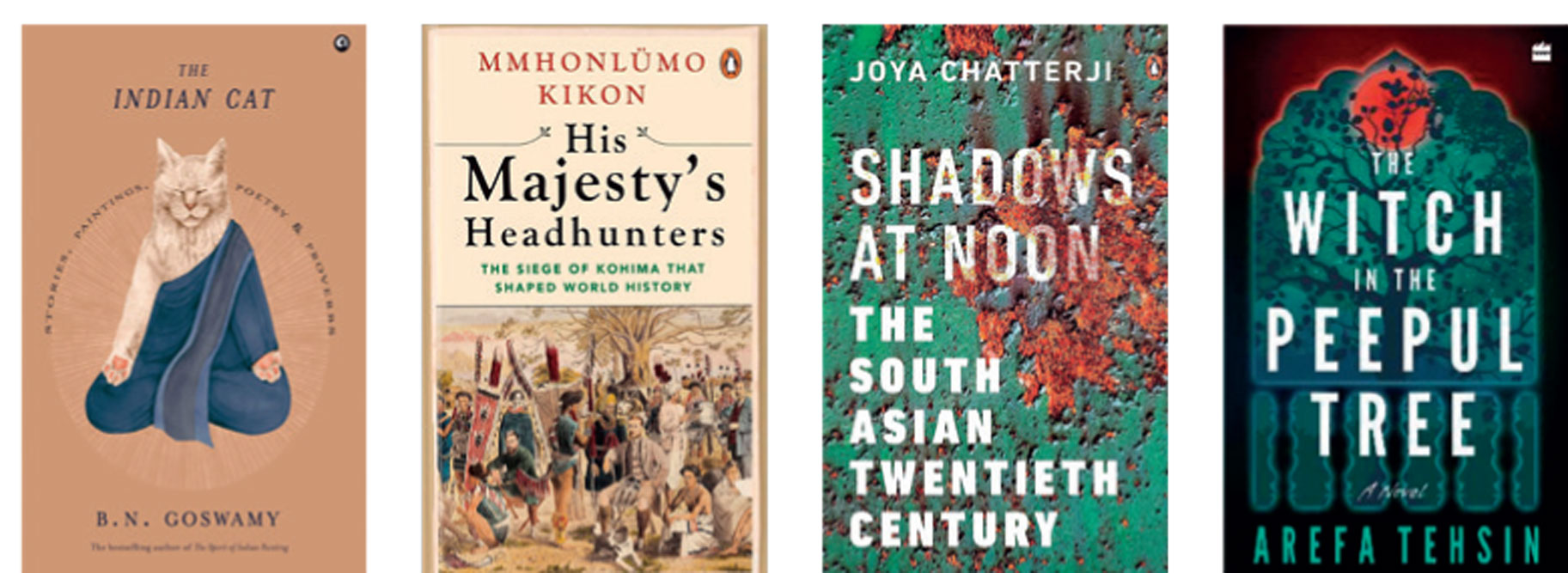
Shadows at Noon: The South Asian Twentieth Century by Joya Chatterji (Viking) . This magisterial tome runs to 842 pages. It wears its erudition lightly, and is written with verve, style and insight. I cannot do justice to it in a paragraph or two. Immersive and experiential, it covers an array of themes, from ‘Competing Visions in Nationalism’ to ‘Migrations at Home and Abroad: South Asian Diaspora’ to ‘The Household, Marriage and Family’ and ‘The Politics of Food’. It is a book that belongs in every serious library, private or public.
His Majesty’s Headhunters: The Siege of Kohima that Shaped World History by Mmhonlumo Kikon (Vintage).The Siege of Kohima had a pivotal role to play in the outcome of World War II. This important book, written with authority and insight, reclaims the historical narrative to be retold in the authentic voice of the people who battled there. In the introduction, Kikon says; “The Battle of Kohima has been written about with momentous vigour and skill by both American and British historians. But that is just the tale told so far by everyone except the Nagas. This is as much the story of Kohima as it is of the manner in which this unlikely capital saved the British Empire and the Allied Forces from defeat.”
A fascinating and engrossing read, told by a poet, politician and scholar.
TISHANI DOSHI, Author
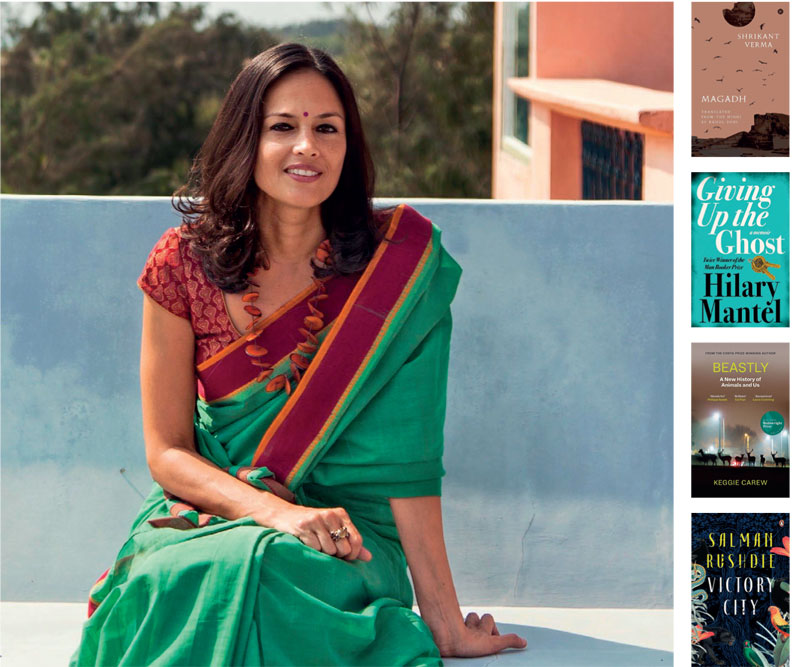
THE BOOK THAT captured the entire feeling of the year for me was Intizar Husain’s Basti (NYRB Classics), which I read for the first time this summer in the most idyllic and languid of situations. The way the novel held time and loss and loneliness, the beauty of its sentences, and the entire broken world it evoked has stayed with me like a prophecy. Rahul Soni’s translations of Shrikant Verma’s magisterial cycle of poems in Magadh (Eka), read well alongside it, further deepening the sense of despair but offering much-needed wit and satire. A collection of poems that stayed with me for its tenderness was Chris Abani’s Smoking the Bible (Copper Canyon Press), elegies for his brother—poems so measured and full of grace, reminding us, “Beauty happens/ whether we seek it or not.” The stupendous Hilary Mantel died in 2022, and this year I read her memoir Giving Up the Ghost (Fourth Estate), trying to find her, and trying to find my way back to understanding why we write and what the point of books are.
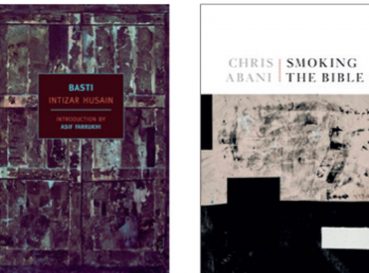
No one does house as protagonist like Mantel does—all the ghosts and half-shadows of possibilities: “What’s to be done with the lost, the dead,” she says, “but write them into being.” I’m still savouring Keggie Carew’s Beastly: A New History of Animals and Us (Canongate), which is capacious and quirky and wondrous, reminding us to rethink our relationship with other animals, and suggesting that one way we might save ourselves is to acknowledge we are a part of nature, not apart from it. And finally, I whooped with joy when Salman Rushdie’s Victory City (Hamish Hamilton) landed on my desk. Viva the story, viva the storyteller.

/wp-content/uploads/2025/01/Cover_Kumbh.jpg)








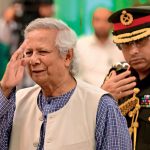


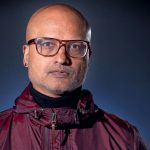

More Columns
What does the launch of a new political party with radical background mean for Punjab? Rahul Pandita
5 Proven Tips To Manage Pre-Diabetes Naturally Dr. Kriti Soni
Keeping Bangladesh at Bay Siddharth Singh